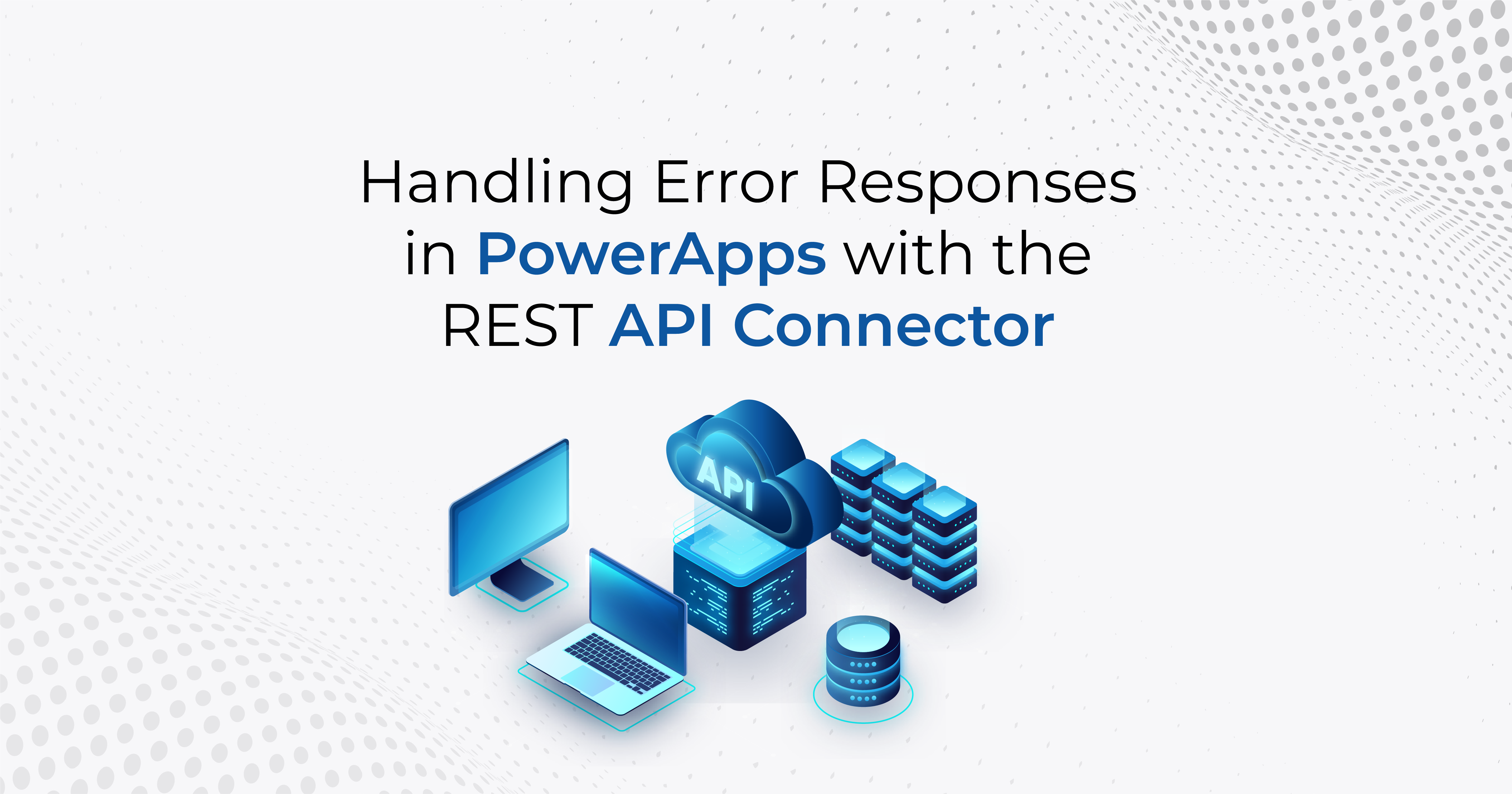PowerApps is a powerful tool that allows you to create custom business applications quickly and easily. One of the key features of PowerApps is the ability to connect with external APIs using the REST API connector. However, when making requests to a REST API, it’s important to handle error responses properly to ensure a good user experience.
This post investigates different types of error responses that can be encountered when using the REST API connector in PowerApps and provide solutions to handle them.
Common Error Types for REST API Connector
Network Error
Network errors can occur when there is a problem with the connection between PowerApps and the API. This can be due to DNS resolution failures or firewall restrictions. When a network error occurs, the REST connector will return an error response with a status code in the 500 range.
Solution: To handle network errors, you can use the “Retry Policy” setting in the “Send an HTTP request to a REST API” action to specify the number of retries and the delay between retries.
In addition, it’s a good practice to implement retry logic to automatically retry failed requests.
Authentication Errors
Authentication errors occur when the credentials provided to the REST API connector are invalid or insufficient to access the requested resource. This can happen when the API requires authentication or when the user account used to connect to the API has been deleted or disabled.
Solution: To handle authentication errors, you can use the “Authentication Type” setting in the “Send an HTTP request to a REST API” action to specify the type of authentication required by the API, such as basic authentication or OAuth.
It’s also recommended to implement “Token Refresh Policy” setting to specify the interval at which the authentication token should be refreshed.
Authorization Errors
Authorization errors occur when the authenticated user does not have the necessary permissions to access the requested resource. This can happen when the API requires specific roles or permissions to access certain endpoints.
Solution: To handle authorization errors, it’s recommended to check the user’s roles and permissions before making the request and display a friendly error message if the user does not have the required permissions.
You can use the “Authorization” setting in the “Send an HTTP request to a REST API” action to specify the required roles or permissions.
Input Validation Errors
Input validation errors occur when the input data provided in the request does not meet the validation rules of the API. This can happen when the API expects specific data types or formats.
Solution: To handle input validation errors, it’s recommended to validate the input data before making the request. Use the “Set Variable” action to store the input data and validate it using the “If” condition.
Server Errors
Server errors occur when the server encounters an internal error while processing the request. This can happen when there is a bug in the API code or when the API is overloaded.
Solution: To handle server errors, use the “Retry Policy” setting in the “Send an HTTP request to a REST API” action to automatically retry failed requests. In addition, it’s a good practice to monitor the server logs and error metrics to identify and fix any bugs or performance issues.
Rate Limit Errors
Rate limit errors occur when the API restricts the number of requests that can be made within a specific time. This can happen when the API is being abused or when the API is designed to limit the amount of traffic it receives.
Solution: To handle rate limit errors, it’s recommended to implement throttling or rate limiting logic to restrict the number of requests made within a specific time.
You can use the “Delay” action to introduce a delay between requests, or the “Scope” action to limit the number of requests made within a specific time. In addition, it’s a good practice to provide clear documentation on the API rate limits and usage policies.
Bottom Line
Handling error responses properly is an important aspect of building robust and reliable applications using the REST API connector in PowerApps.
By understanding the different types of error responses and implementing the recommended solutions, you can provide a better user experience and ensure the stability and performance of your application.
Remember to always validate input data, provide clear documentation, and monitor server logs and error metrics to identify and fix any issues. For any further details on error responses, do not hesitate to contact us.



